Dentistry is the branch of medicine that deals with the diagnosis, prevention, and treatment of diseases and conditions affecting the teeth, gums, and other oral structures. Dentists are medical professionals who specialize in the care and maintenance of patients' oral health along with Smile designing in Hyderabad.
Different types of dentistry at Best dental hospital in Gachibowli:
- General Dentistry: This type of dentistry focuses on routine check-ups, cleanings, and fillings to prevent and treat cavities, as well as scaling and polishing teeth to remove tartar and plaque.
- Restorative Dentistry: This type of dentistry involves repairing and replacing teeth that have been damaged or decayed, including fillings, crowns, bridges, and dental implants by Best Implantologist in Miyapur with Dental implants in Hafeezpet
- Orthodontics: This type of dentistry or Orthodontic braces in Gachibowli focuses on the alignment of teeth and the bite, using appliances such as braces and retainers to straighten teeth and improve the overall appearance of the smile.
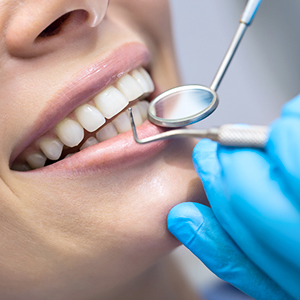
- Oral Surgery: This type of dentistry by Dental surgeon in kondapur involves surgical procedures such as extractions, bone grafts, and sinus lifts to correct problems with the jawbone, gums, or teeth.
- Pediatric Dentistry: This type of dentistry specializes in the care of children's teeth, including preventative care, fillings, and orthodontic treatment.
- Prosthodontics: This type of dentistry focuses on replacing missing teeth with prosthetic devices such as dentures, crowns, and bridges.
- Endodontics: This type of dentistry involves treating problems with the pulp and nerves of teeth, such as root canals and Root canal treatment in Kondapur and apicoectomies.
- Periodontics: This type of dentistry focuses on the gums and surrounding tissues, including treatment for gum disease, gum recession, and gum grafts.
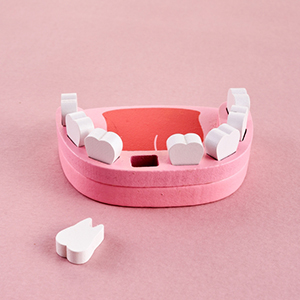
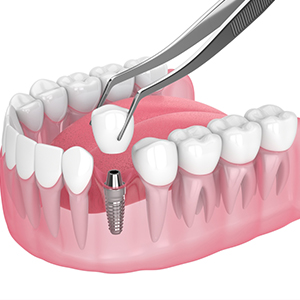
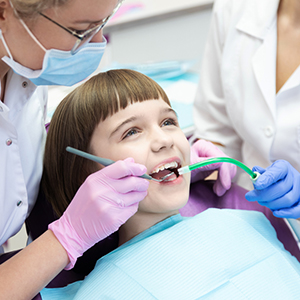
Tips to maintain good dental hygiene by Best dentist in kondapur:
- Brushing teeth at least twice a day with fluoride toothpaste.
- Flossing once a day to remove food particles from between teeth.
- Visiting a dentist regularly for check-ups and cleanings.
- Avoiding sugary snacks and drinks that contribute to tooth decay.
For more details, consult DR. NISHITHA PALEPU, one of the Best Dentist in hitec city and specialist in Invisalign in Madinaguda at Neo Asian Clinic, leading Dental clinic in kondapur
Dental crowns are caps that cover the entire tooth to restore its shape, size, strength, and appearance. They are typically used to repair teeth that are damaged or decayed, or to hold a dental bridge in place. Crowns can be made from various materials such as porcelain, ceramic, gold, or composite resin. The process of getting a dental crown involves preparing the tooth, taking impressions, and then placing the crown. Crowns can last for many years with proper care and can help to improve the overall appearance and function of the tooth. They can also help to prevent further tooth decay and damage.
Dental implants are a popular solution for replacing missing teeth, offering a natural-looking and feeling alternative to traditional dentures or bridges. A titanium post is surgically inserted into the jawbone, serving as an anchor for a crown or bridge. The implant fuses with the surrounding bone over time, providing a stable and durable foundation for chewing and speaking. Implants can also be used to support dentures, securing them in place for a confident and comfortable bite. With proper care, dental implants can last for decades, restoring oral function and aesthetics with unparalleled results.
Dental dentures are prosthetic devices designed to replace missing teeth. There are several types of dentures, each with its own benefits and drawbacks. Conventional full dentures are the most common type, where a patient wears a removable appliance that replaces all the teeth in a specific jaw. Immediate dentures are placed immediately after tooth extraction, while overdentures are attached to existing natural teeth or dental implants. Partial dentures fill gaps between natural teeth, while implant-supported dentures anchor to dental implants for increased stability. Flipper dentures are temporary, and flexible dentures offer flexibility and comfort. Each type is designed to meet individual needs and improve oral function.
Dental extractions are a common dental procedure where a tooth is removed from the mouth. It is usually performed when a tooth is severely damaged or decayed beyond repair, or when it's impacted and cannot be saved through other treatments. There are two types of extractions: simple and surgical. Simple extractions are performed on visible teeth in the mouth, while surgical extractions require the removal of gum tissue and bone to access the tooth. After the extraction, the dentist may apply a dressing to the extraction site and provide pain medication to manage discomfort.
Dental gum surgery, also known as periodontal surgery, is a procedure to treat gum disease and restore the health of the gums and surrounding tissues. The surgery typically involves the removal of diseased gum tissue and the re-contouring of the gum line to reduce pockets between teeth and gums. This helps to prevent further bone loss and reduces the risk of tooth loss. Additionally, it can improve the overall appearance of the smile by eliminating excess gum tissue and creating a more even gum line. The procedure is usually performed under local anesthesia and requires a few days of recovery time.
Invisalign is a popular orthodontic treatment that uses clear aligners to straighten teeth without the need for traditional metal braces. The process begins with a consultation and impressions are taken of the teeth. The impressions are then used to create a series of custom-made aligners that gradually move the teeth into their desired position. The aligners are worn for 20-22 hours a day and are replaced every two weeks as the teeth move. Invisalign is a discreet and comfortable option for adults and teens, and can be used to treat a range of orthodontic issues, including crowding, spacing, and mild bite problems.
Laser dentistry is a cutting-edge technology that uses high-intensity light beams to perform various dental procedures with precision and accuracy. This innovative method enables dentists to treat a range of conditions, including tooth decay, gum disease, and tooth sensitivity, with minimal discomfort and less post-operative pain. Lasers can also be used for teeth whitening, cavity removal, and gum recontouring. The benefits of laser dentistry include reduced bleeding, swelling, and bacteria growth, as well as faster healing times and reduced need for anesthesia. This advanced technology allows dentists to provide more effective and gentle treatments for patients of all ages.
Orthodontic braces are a dental appliance designed to correct misaligned teeth and jaws. They consist of a system of brackets, wires, and elastics that work together to gradually move teeth into their proper position. The most common type of braces are metal brackets attached to the teeth with a bonding agent, but clear ceramic or lingual (behind the teeth) options are also available. Orthodontic treatment can correct issues such as overbite, underbite, crossbite, and spacing or crowding between teeth. With proper care, braces can help improve the appearance of teeth, enhance oral function, and boost overall confidence.
A root canal treatment, also known as endodontic therapy, is a dental procedure to remove infected or damaged pulp from inside a tooth. The pulp contains nerves, blood vessels, and connective tissue that can become infected due to decay or trauma. The procedure involves making an access hole in the tooth to remove the infected pulp, cleaning and disinfecting the canal with specialized instruments, and then filling and sealing the canal to prevent further infection. This procedure is often performed to save a tooth from extraction and alleviate pain and discomfort associated with an infected tooth.
Smile designing is a process that involves creating a personalized smile for an individual. It involves a thorough examination of the patient's teeth, gums, and facial structure to determine the most aesthetically pleasing and functional smile. The dentist uses computer software to simulate different smile designs, taking into account factors such as tooth shape, color, and alignment. The final design is then used to create a customized treatment plan, which may include orthodontics, veneers, crowns, or other restorative procedures. With smile designing, individuals can achieve a radiant and confident smile that enhances their overall appearance and self-esteem.
Dental jewellery, also known as tooth jewellery, is a type of accessory that is attached to the teeth. It typically consists of small ornaments, charms, or studs that are attached to the tooth enamel using a special adhesive or dental cement. Dental jewellery can be used for aesthetic purposes, such as to add a decorative touch to the smile, or for functional purposes, such as to mark a special occasion or milestone. It is available in a variety of styles, including studs, barrettes, and charms, and can be made from materials such as gold, silver, and plastic.
Dental tooth restoration is a common procedure used to repair and restore teeth that are damaged or decayed. The goal of restoration is to preserve the natural tooth structure and function, as well as improve its appearance. Restorative materials such as fillings, crowns, and veneers are used to rebuild and shape the tooth. Fillings are used to fill cavities, while crowns and veneers are used to cover the entire tooth or a small area. The type of restoration used depends on the extent of the damage and the patient's desired outcome. With proper care, restored teeth can last for many years.
Veneers are thin layers of porcelain or composite material bonded to the front of teeth to improve their appearance. They are a popular cosmetic dental treatment for individuals with discolored, chipped, or misaligned teeth. The procedure typically involves preparing the tooth by removing a small amount of enamel, then bonding the veneer to the tooth using a special adhesive. Veneers can be used to whiten, straighten, or reshape teeth, and can last up to 20 years with proper care. They are a non-invasive and reversible option that can significantly enhance the aesthetic appeal of a smile.
Crowns
Dental crowns are caps that cover the entire tooth to restore its shape, size, strength, and appearance. They are typically used to repair teeth that are damaged or decayed, or to hold a dental bridge in place. Crowns can be made from various materials such as porcelain, ceramic, gold, or composite resin. The process of getting a dental crown involves preparing the tooth, taking impressions, and then placing the crown. Crowns can last for many years with proper care and can help to improve the overall appearance and function of the tooth. They can also help to prevent further tooth decay and damage.
Dental Implants
Dental implants are a popular solution for replacing missing teeth, offering a natural-looking and feeling alternative to traditional dentures or bridges. A titanium post is surgically inserted into the jawbone, serving as an anchor for a crown or bridge. The implant fuses with the surrounding bone over time, providing a stable and durable foundation for chewing and speaking. Implants can also be used to support dentures, securing them in place for a confident and comfortable bite. With proper care, dental implants can last for decades, restoring oral function and aesthetics with unparalleled results.
Dentures
Dental dentures are prosthetic devices designed to replace missing teeth. There are several types of dentures, each with its own benefits and drawbacks. Conventional full dentures are the most common type, where a patient wears a removable appliance that replaces all the teeth in a specific jaw. Immediate dentures are placed immediately after tooth extraction, while overdentures are attached to existing natural teeth or dental implants. Partial dentures fill gaps between natural teeth, while implant-supported dentures anchor to dental implants for increased stability. Flipper dentures are temporary, and flexible dentures offer flexibility and comfort. Each type is designed to meet individual needs and improve oral function.
Extractions
Dental extractions are a common dental procedure where a tooth is removed from the mouth. It is usually performed when a tooth is severely damaged or decayed beyond repair, or when it's impacted and cannot be saved through other treatments. There are two types of extractions: simple and surgical. Simple extractions are performed on visible teeth in the mouth, while surgical extractions require the removal of gum tissue and bone to access the tooth. After the extraction, the dentist may apply a dressing to the extraction site and provide pain medication to manage discomfort.
Gum Surgery
Dental gum surgery, also known as periodontal surgery, is a procedure to treat gum disease and restore the health of the gums and surrounding tissues. The surgery typically involves the removal of diseased gum tissue and the re-contouring of the gum line to reduce pockets between teeth and gums. This helps to prevent further bone loss and reduces the risk of tooth loss. Additionally, it can improve the overall appearance of the smile by eliminating excess gum tissue and creating a more even gum line. The procedure is usually performed under local anesthesia and requires a few days of recovery time.
Invisalign
Invisalign is a popular orthodontic treatment that uses clear aligners to straighten teeth without the need for traditional metal braces. The process begins with a consultation and impressions are taken of the teeth. The impressions are then used to create a series of custom-made aligners that gradually move the teeth into their desired position. The aligners are worn for 20-22 hours a day and are replaced every two weeks as the teeth move. Invisalign is a discreet and comfortable option for adults and teens, and can be used to treat a range of orthodontic issues, including crowding, spacing, and mild bite problems.
Laser Dentistry
Laser dentistry is a cutting-edge technology that uses high-intensity light beams to perform various dental procedures with precision and accuracy. This innovative method enables dentists to treat a range of conditions, including tooth decay, gum disease, and tooth sensitivity, with minimal discomfort and less post-operative pain. Lasers can also be used for teeth whitening, cavity removal, and gum recontouring. The benefits of laser dentistry include reduced bleeding, swelling, and bacteria growth, as well as faster healing times and reduced need for anesthesia. This advanced technology allows dentists to provide more effective and gentle treatments for patients of all ages.
Orthodontic Braces
Orthodontic braces are a dental appliance designed to correct misaligned teeth and jaws. They consist of a system of brackets, wires, and elastics that work together to gradually move teeth into their proper position. The most common type of braces are metal brackets attached to the teeth with a bonding agent, but clear ceramic or lingual (behind the teeth) options are also available. Orthodontic treatment can correct issues such as overbite, underbite, crossbite, and spacing or crowding between teeth. With proper care, braces can help improve the appearance of teeth, enhance oral function, and boost overall confidence.
Root Canal Treatment
A root canal treatment, also known as endodontic therapy, is a dental procedure to remove infected or damaged pulp from inside a tooth. The pulp contains nerves, blood vessels, and connective tissue that can become infected due to decay or trauma. The procedure involves making an access hole in the tooth to remove the infected pulp, cleaning and disinfecting the canal with specialized instruments, and then filling and sealing the canal to prevent further infection. This procedure is often performed to save a tooth from extraction and alleviate pain and discomfort associated with an infected tooth.
Smile Designing
Smile designing is a process that involves creating a personalized smile for an individual. It involves a thorough examination of the patient's teeth, gums, and facial structure to determine the most aesthetically pleasing and functional smile. The dentist uses computer software to simulate different smile designs, taking into account factors such as tooth shape, color, and alignment. The final design is then used to create a customized treatment plan, which may include orthodontics, veneers, crowns, or other restorative procedures. With smile designing, individuals can achieve a radiant and confident smile that enhances their overall appearance and self-esteem.
Tooth Jewel
Dental jewellery, also known as tooth jewellery, is a type of accessory that is attached to the teeth. It typically consists of small ornaments, charms, or studs that are attached to the tooth enamel using a special adhesive or dental cement. Dental jewellery can be used for aesthetic purposes, such as to add a decorative touch to the smile, or for functional purposes, such as to mark a special occasion or milestone. It is available in a variety of styles, including studs, barrettes, and charms, and can be made from materials such as gold, silver, and plastic.
Tooth restoration
Dental tooth restoration is a common procedure used to repair and restore teeth that are damaged or decayed. The goal of restoration is to preserve the natural tooth structure and function, as well as improve its appearance. Restorative materials such as fillings, crowns, and veneers are used to rebuild and shape the tooth. Fillings are used to fill cavities, while crowns and veneers are used to cover the entire tooth or a small area. The type of restoration used depends on the extent of the damage and the patient's desired outcome. With proper care, restored teeth can last for many years.
Veneers
Veneers are thin layers of porcelain or composite material bonded to the front of teeth to improve their appearance. They are a popular cosmetic dental treatment for individuals with discolored, chipped, or misaligned teeth. The procedure typically involves preparing the tooth by removing a small amount of enamel, then bonding the veneer to the tooth using a special adhesive. Veneers can be used to whiten, straighten, or reshape teeth, and can last up to 20 years with proper care. They are a non-invasive and reversible option that can significantly enhance the aesthetic appeal of a smile.
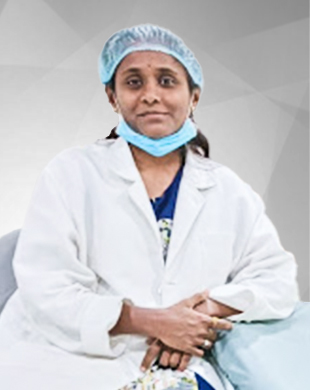
DR. NISHITHA PALEPU
MDS, Prosthodontist & Implantologist
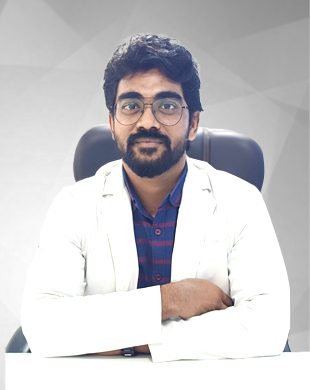
Dr. M . Avinash
Consultant Oral and Maxillofacial Surgeon

Dr. P. Durga Bhavani
Consultant Endodontist (Root canal specialist)

Dr. Jandhyala Prathyusha
Consultant Periodontist ( gum health specialist )
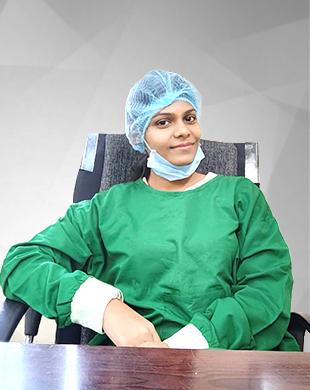
Dr. kaveri Chowdary
Consultant orthodontist Invasalign Provider

